[TOC]
- Title: From Word Models to World Models: Translating from Natural Language to the Probabilistic Language of Thought
- Author: Lionel Wong et. al.
- Publish Year: 23 Jun 2023
- Review Date: Sun, Jul 2, 2023
- url: https://arxiv.org/pdf/2306.12672.pdf
Summary of paper
Motivation
-
leverage a theory of linguistic meaning to build machines that think in more human-like ways.
-
we frame linguistic meaning as a context-sensitive mapping from NL into a probabilistic language of thought (PLoT) – a general-purpose symbolic substrate for probabilistic, generative world modelling
Some key terms
language and thinking
- Theories of cognition have long considered human language and thinking to be deeply related, but fundamentally distinct. Thinking, in many traditional cognitive theories, revolves around goal-directed world modeling, inference, and decision making—constructing mental models of the world that reflect prior beliefs, can be updated from new observations, and support rational prediction and decision making toward’s one’s goals (Craik, 1967; Gentner & Stevens, 2014; Johnson-Laird, 1980, 1989; Lake, Ullman, Tenenbaum, & Gershman, 2017; Morgan, 1999; Nersessian et al., 2010).
- Language, in contrast, centers around communicating these thoughts to others, and receiving their thoughts in turn. In most linguistic theories, human languages are mappings between the internal representations of thought and an externalizable symbol system, which might be phonemes, signs, or glyphs (Frege, 1892; Heim & Kratzer, 1998; Lewis, 1976).
framework
- our rational meaning construction framework decomposes language-informed thinking into two modules:
- A meaning function translates natural language into probabilistic programming language (PPL) statements that represent linguistic meaning with respect to a symbolic world model.
- An inference function computes probabilities over the space of possible worlds consistent with and conditioned on information in the language.
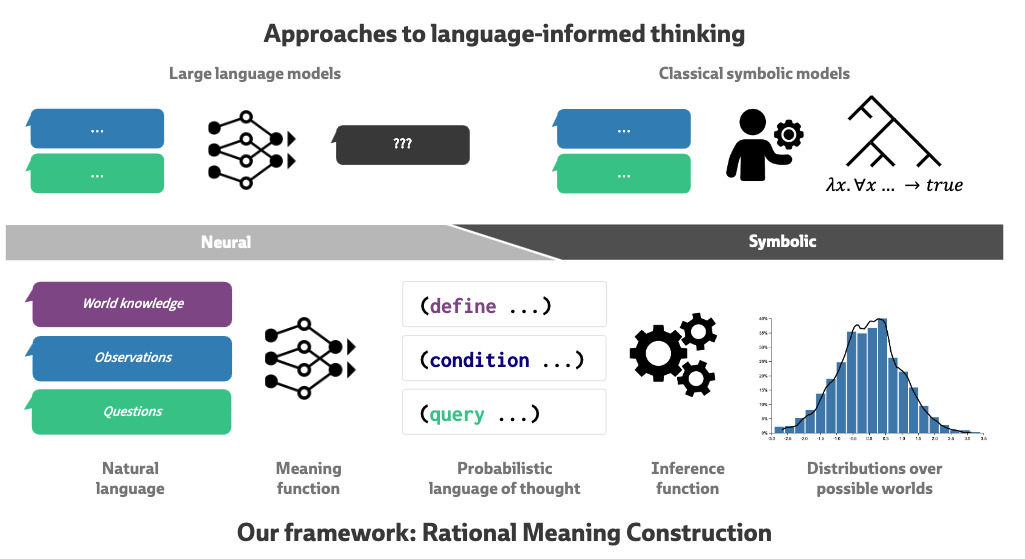
Knowledge, observation and query
- Knowledge maps to generative world models
- Observations maps to condition statements
- Query maps to query statement
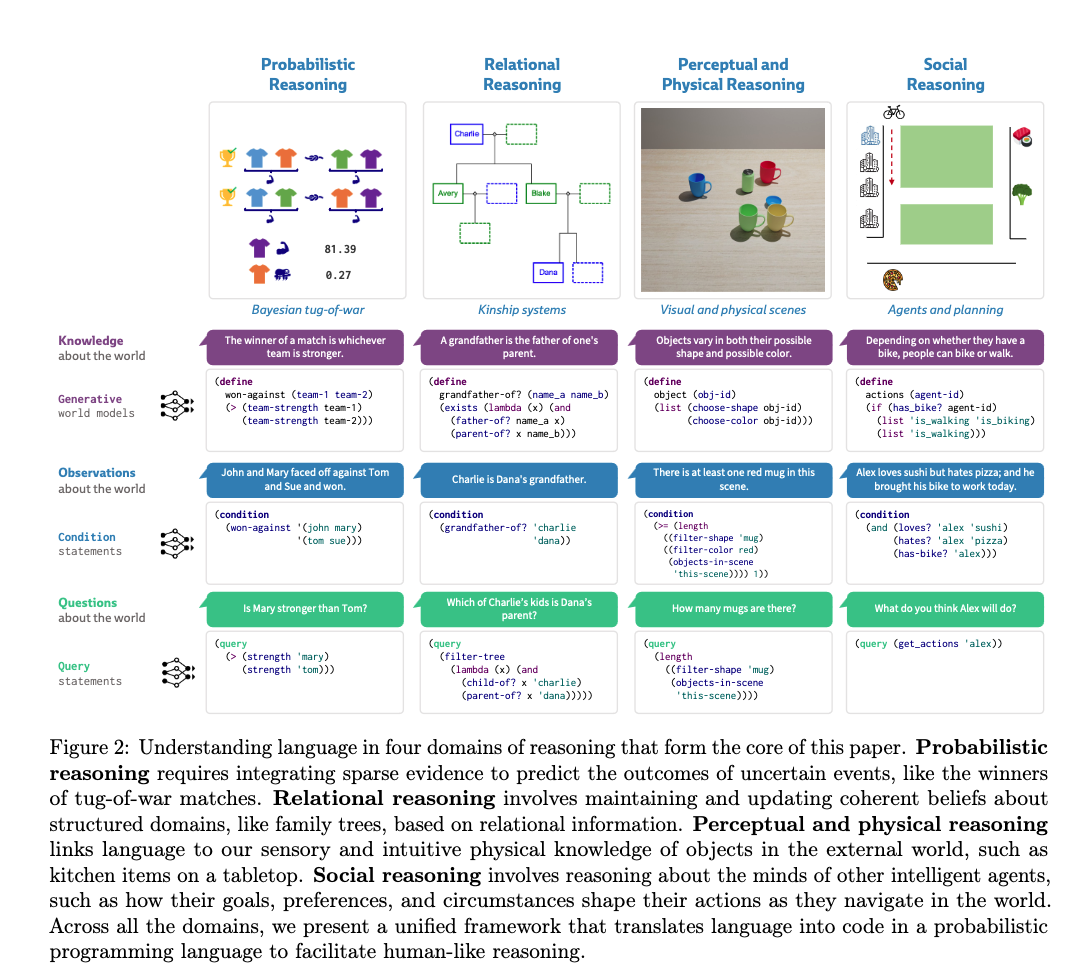
Examples
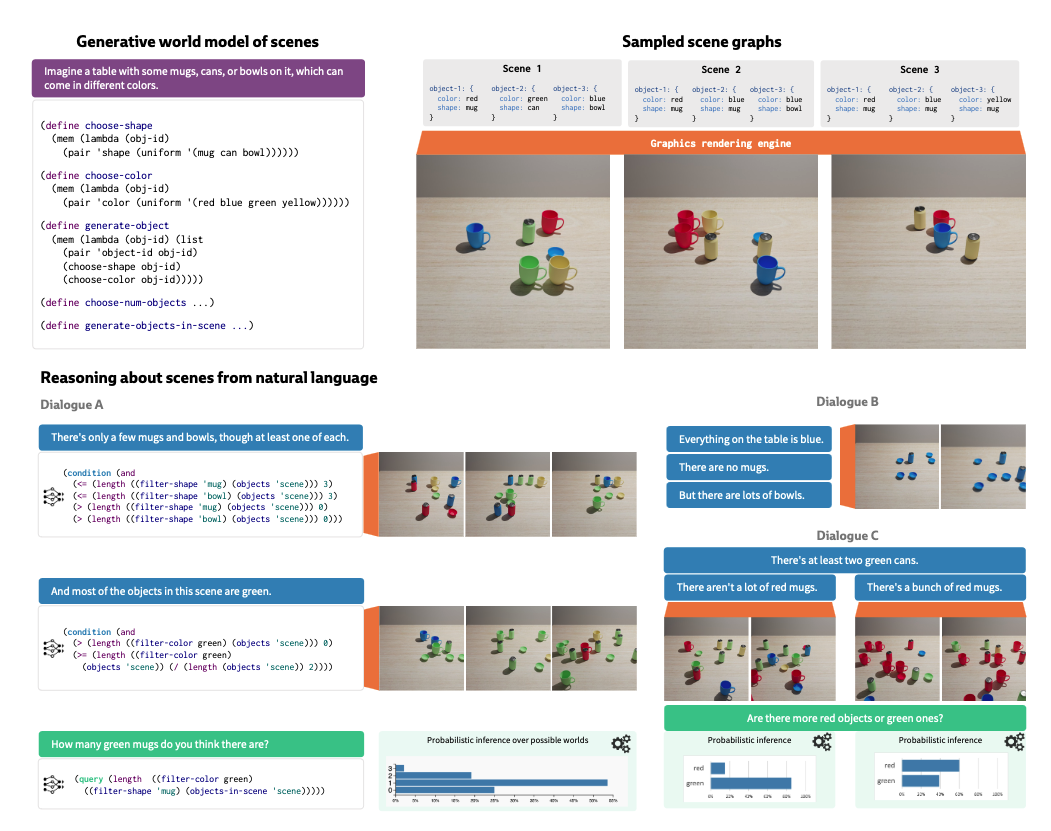
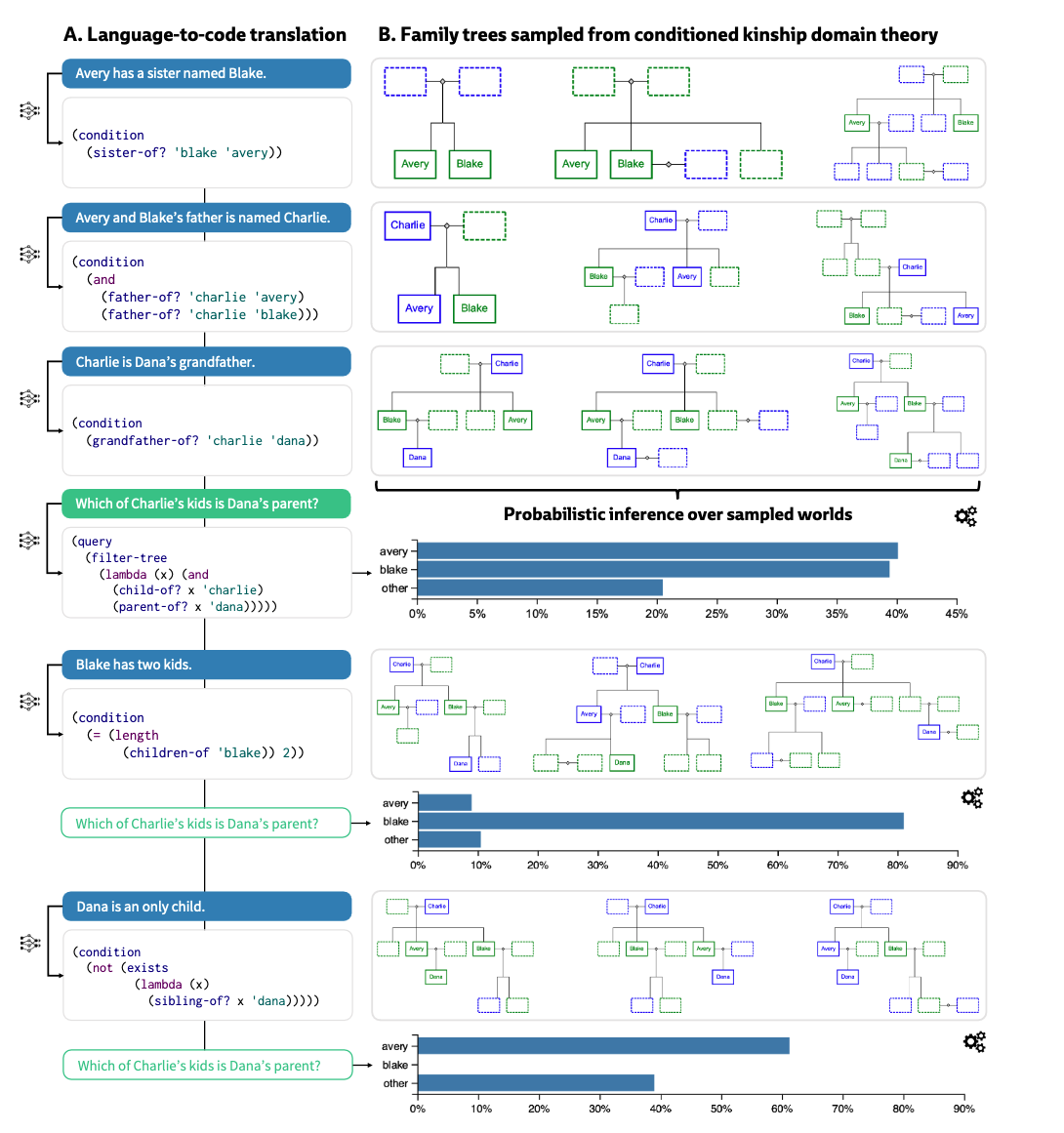
Planning
- Our example probabilistic generative model describes a prior over agents with different preferences for the nearby restaurants shown on the map, as well as the relative cost of getting to each one on bike or on foot. Integrating a model-based planner into this generative model allows it to express a prior on how agents will actually act based on their desires, balancing these preferences against whether restaurants are open, and whether or not they have a bike.
- Observations and queries about the agents, their goals, and about the world itself updates a unified belief distribution, reflecting how agents plan in the world and how observing their actions drives inferences about the latent state in the world.
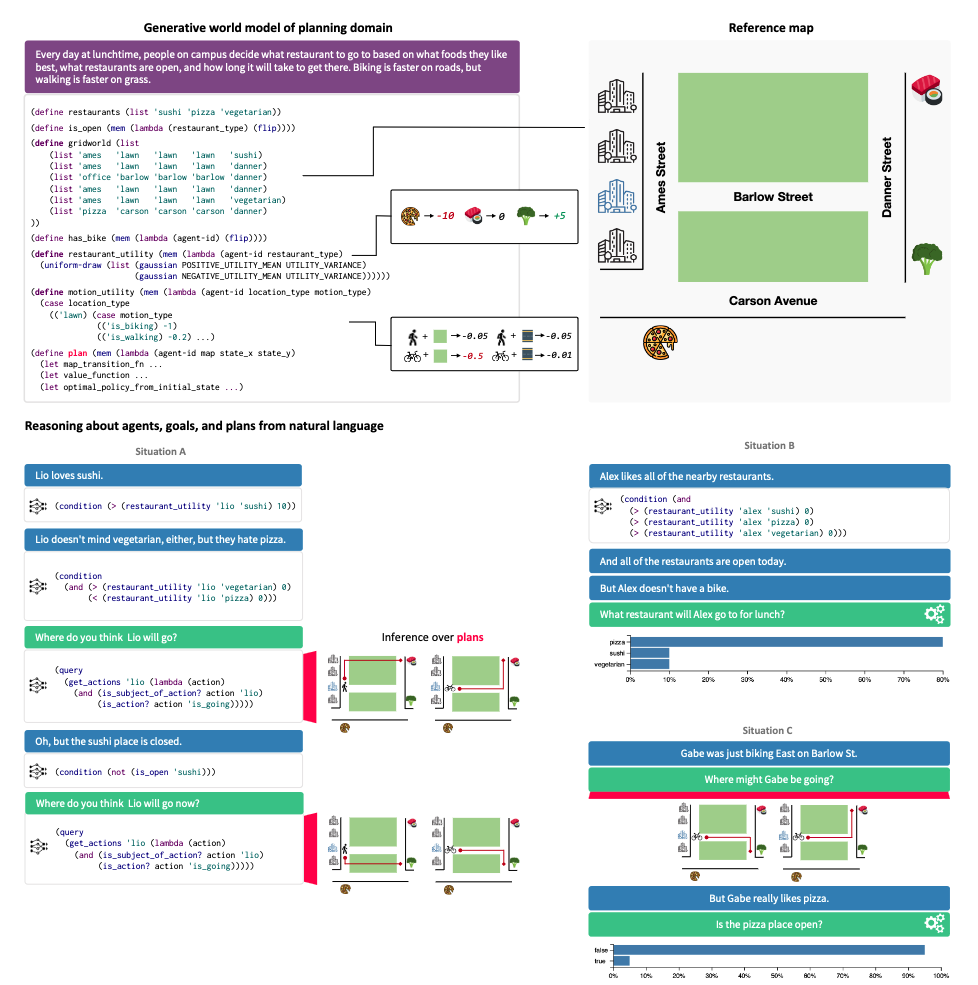
Good things about the paper (one paragraph)
- very detailed paper
Potential future work
- converting language into code based might be a key to have a solid reasoning process
- in term of generating the reasoning outcome, the authors suggested having a probabilistic inference function to generate the probability distribution of the choices.
